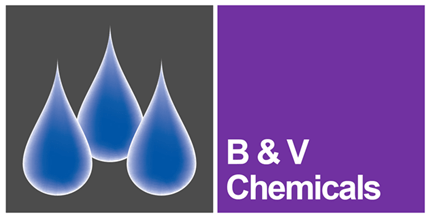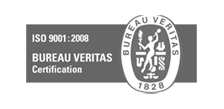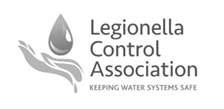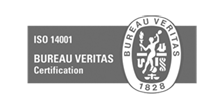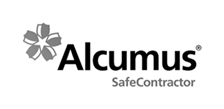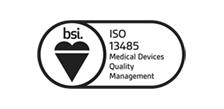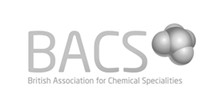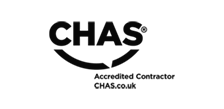| Product code |
Application |
Composition |
Benefit |
| CHLORINE BASED |
BV1103
ULTRALOX 40 |
Microbial control and biofilm removal in domestic/industrial water and ancillaries |
Stable active halogen liquid |
Approved formulation (up to 1ppm active) for continuous dosing of potable water and down water services. Straightforward proportional dosing system available. Safe, effective, and easy to use solution.approved under Regulation 31 of the Water Supply (Water Quality) Regulations 2016 approval number 56/4/1530 |
| BV102 |
Used to disinfect tanks, down water service pipework and potable water systems |
14/15% Sodium hypochlorite liquid |
Extremely effective oxidising biocide used for tank, down water services and potable water system disinfection. Neutralise with sodium thiosulphate prior to discharge. |
| BV54 |
A chlorine based biocide + biodispersant for the treatment of cooling towers |
14/15% sodium hypochlorite + biodispersant |
Dosed 1:1 with BV55 to generate hypobromous acid. Contains biodispersant for dispersal of biofilm and prevention of the build up of biofilm in open cooling systems. |
| BV1037 |
A chlorine based biocide + antiscalant |
14/15% sodium hypochlorite + antiscalant |
Contains 15% sodium hypochlorite. Extremely effective oxidising biocide.This product is particularly useful in hard water areas where the antiscalant in the formulation nhibits scale formation in injection ports |
| BV92 |
Suitable for a wide range of disinfection applications |
Chlorine tablets. Sodium dichloroisocyanurate |
Small tablets enable accurate dosing. Fast dissolving tablets. Straight forward dosing calculations ie1 tablet gives 1 ppm in 1000 litres. |
| BV125 |
Suitable for a wide range of disinfection applications |
Chlorine tablets. Contain trichloro isocyanuric acid |
Slowly reacts with water to release chlorine. Suitable for a wide range of applications. Slow release 20g tablets. |
| BV126 |
Suitable for a wide range of disinfection applications |
Chlorine tablets. Contain trichloro isocyanuric acid |
Slowly reacts with water to release chlorine. Suitable for a wide range of applications. Very slow release 200g tablets. |
| BV21 |
Suitable for a wide range of disinfection applications |
Calcium hypochlorite granules |
Easy to use, rapid dissolving chlorine source. |
| BV1014 |
Suitable for a wide range of disinfection applications |
Calcium hypochlorite tablets |
Tablet form of BV21 |
| BROMINE BASED |
| BV476 |
For the continuous treatment of cooling towers and water features |
Bromine tablets. A mixture of brominated and chlorinated hydantoins |
The product should be dosed using a purpose built brominator to ensure good dose control. This may be manually controlled, but the use of timers or redox control is preferred. |
| BV1422 |
For the continuous treatment of cooling towers |
Sodium Bromide solution |
A solution of sodium bromide for the treatment of cooling towers. Dosed 1:1 with BV54 to generate Hypobromous acid. |
| BV138 |
For the continuous treatment of cooling towers |
Concentrated sodium bromide solution |
A solution of sodium bromide for the treatment of cooling towers. Dosed 1:3 with BV54 to generate hypobromous acid. |
| BV55 |
For the continuous treatment of cooling towers |
Sodium Bromide solution |
A solution of sodium bromide for the treatment of cooling towers. Dosed 1:1 with BV54 to generate hypobromous acid. |
| HYDROGEN PEROXIDE / PERACETIC ACID BASED |
| BV659 |
Used to disinfect tanks, down water service pipework and potable water systems |
Silver stabilised hydrogen peroxide |
Broad spectrum biocide. Effectively removes biofilm. Can be dosed into down water services systems at recommended dose rate where it will break down into water and oxygen. Extensive BPR – Biocidal Product Authorisation and is permitted to be sold in the UK for application classes PT02, 03, 04, 05. Also listed as an approved constant dose biocide in the HSE ACOP HSG274 Pt2: |
| BV103 |
CIP procedures and down water services disinfections |
Hydrogen peroxide |
Useful in the cleaning of complex CIP routes where flow and high soiling are a problem.E.g. heat exchangers, brewery Para flows, cask rackers, fillers, filters etc. can also be used in down water services disinfection. |
| BV392 |
Softener resin disinfection. Food and Drinks industry sanitiser applications |
Peracetic acid |
Rapid acting broad spectrum biocide. Suitable for brewery, dairy and soft drinks terminal rinse sanitiser applications. |
| BV1634 |
Used to disinfect tanks, down water service pipework and potable water systems |
Silver stabilised hydrogen peroxide (20% solution) |
More dilute version of BV659 |
| BV1633 |
Hard surface disinfectant |
Silver stabilised hydrogen peroxide (ready to use 3% solution) |
Ready-to-use biocidal product with 3% hydrogen peroxide. Ideal product for hazard surface disinfection. Proven virucidal and bactericidal action. |
